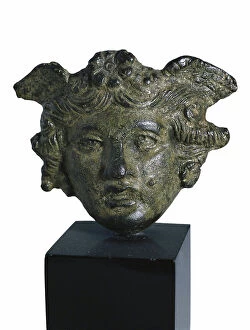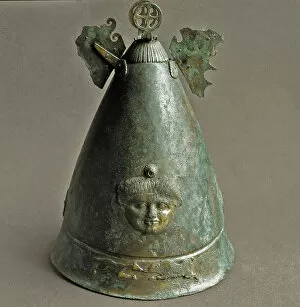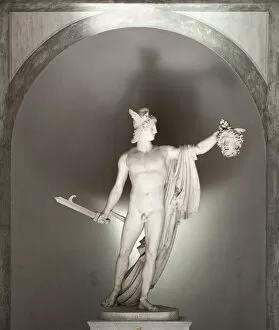Meduse Mythology Collection
Meduse mythology has captivated artists and scholars throughout history, with its intriguing tales of heroes, gods, and the infamous Gorgon
For sale as Licensed Images
Choose your image, Select your licence and Download the media
Meduse mythology has captivated artists and scholars throughout history, with its intriguing tales of heroes, gods, and the infamous Gorgon. From ancient Greek pottery to Renaissance sculptures and modern paintings, Medusa's story continues to inspire awe and fascination. In the 4th century BC, an Apulian helmet adorned with a medusa head was crafted in bronze. This exquisite piece showcases the fearsome visage of Medusa as a symbol of protection in battle. Another depiction from around 1655-1658 can be found on the ceiling of Queen Anne of Austria's summer apartments in Paris' Louvre Museum. Painted by Giovanni Romanelli, it portrays Perseus slaying Medusa amidst a grandiose setting. Benvenuto Cellini's bronze sculpture from 1545-1554 captures Perseus holding Medusa's severed head triumphantly. The detailed craftsmanship brings this iconic moment to life at Florence's Museo Nazionale del Bargello. A black-figure amphora by Amisis dating back to 540 BC can also be seen at London's British Museum depicting Perseus cutting off Medusa's head. The symbolism behind Medusa extends beyond her terrifying appearance; she represents reason triumphing over senses. A painting on the reverse side of a shield covered with canvas illustrates this victory through the mythological tale of Perseus and Medusa (Gorgona). Antonio Canova further immortalized this scene in marble with his sculpture portraying Perseus brandishing Medusa’s head. Meduse mythology even finds its place within political allegory. An artwork created after 1783 depicts heroism as one of thirteen values that uphold society in harmony. Additionally, there is mention of "Persee weapon, " which turns Phinee into stone - showcasing how powerful and transformative this mythical creature truly is. Not limited to visual arts alone, Alexei von Jawlensky painted an enchanting portrait of Medusa, capturing her captivating gaze and mysterious allure.




















